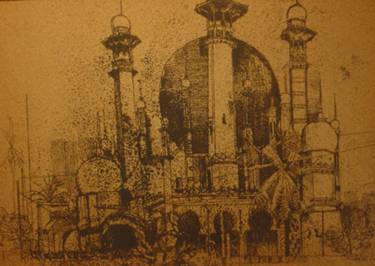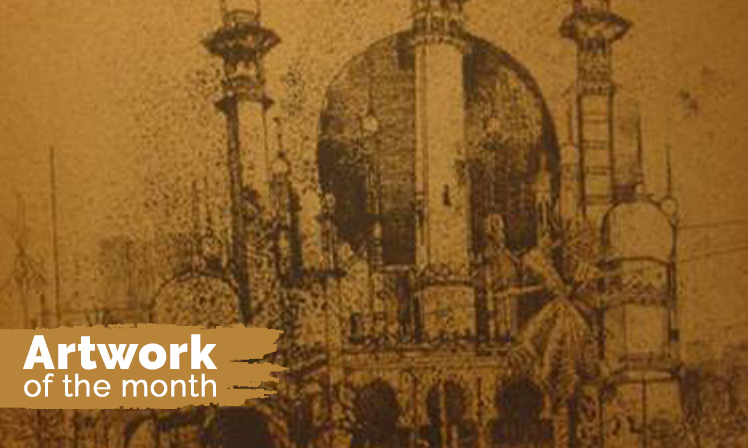This month, we feature artwork from the Muzium & Galeri Tuanku Fauziah’s fine art collection.
By Cheryl Chelliah Thiruchelvam (PhD)

Seah Kim Joo, Masjid Kuala Kangsar, 1963, Monotype, 58cmX41cm. Image courtesy of Muzium & Galeri Tuanku Fauziah
Born in Singapore in 1939, Seah Kim Joo was raised in Terengganu where he learned traditional batik making techniques. He would later pursue his education at the Nanyang Academy of Fine Arts in 1959 before returning to Terengganu again.
Humans and their daily socio-economic activities prevail as Seah’s favoured subject, as seen in his works such as East Coast Fishermen, Market Scene, Weaver, and Friendship. It is a point to moot that Masjid Kuala Kangsar, a monotype print on yellow-brownish paper, is a departure from his other colourful and ‘lively’ works. The flatness of the object/subject and the emphasis on geometrical lines in his work can be deduced as an influence from the traditional batik making technique.
Seah completes the depiction of the mosque with a few coconut trees and other growing foliage that further provides the conception of an almost-rural setting. In his play of black and white colours to relate to positive and negative spaces, it is worthy to note that the dome has been given a darker shade. This does not imply the dome as a negative space, but, perhaps, Seah intentionally gave the dome a darker shade to emphasise it as a focal point in his work. This is such as the ‘onion’ dome and three minarets (four in total in the actual building), as seen in Seah’s work, is thought to be derivative of Moghul architecture.
Analysing the construction of the mosque, one would notice that his mosque seems to be tilted slightly with a slight squeeze to the ground at the base. By doing so, Seah gives a playful feel to the mosque, unlike the human subjects in his other works, where his portrayal of human figures are given careful observation.
Cheryl C. Thiruchelvam is an Assistant Professor currently attached to the Advertising Department at UTAR, Malaysia. Her primary research interest is in Hindu-Buddhist visual arts of the Southeast Asian region.

